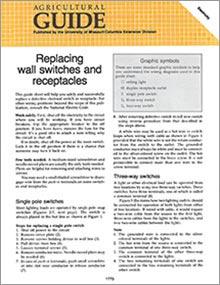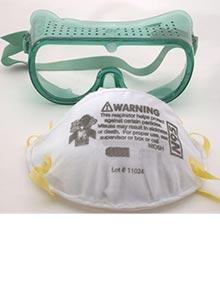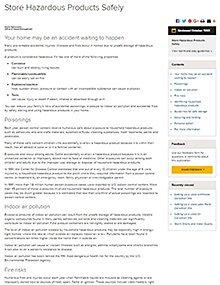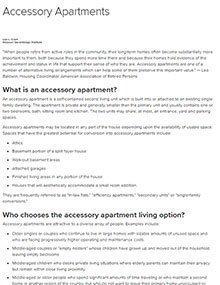Replacing Wall Switches and Receptacles
Reviewed
Editor’s note
The PDF version of this publication includes illustrations.
Feeds for Light Horses
Reviewed
Feed ingredients needed for horses are carbohydrates, fats, protein, minerals, vitamins and water. Carbs, fats and proteins can yield energy. Grains and roughages, including pasture, are major sources of energy and protein. Learn more in this guide.
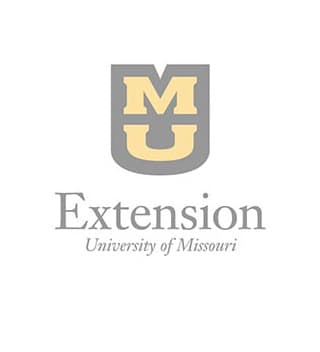
A System for Pond Water Purification
Reviewed
Qualitative Nitrate Detection for Toxicity Potential
Reviewed
George B. Garner
Department of Biochemistry
This test is designed for survey use and for advising clients of the need for quantitative nitrate analysis when the level of nitrate detected could possibly cause nitrate/nitrite poisoning. The test can be used on water supplies, hay, silage, fodder, pasture samples and mixed ground feeds.

Beef Carcass Grading and Evaluation
Reviewed
Forages for Cattle: New Methods of Determining Energy Content and Evaluating Heat Damage
Reviewed
Improved system of forage analysisThe crude fiber method of feed analysis has been used for more than 100 years. Although this method was an important first attempt at determining the energy content of feeds, it has a number of shortcomings.
Kitchen Planning: Work Centers
Reviewed
Lelland L. GallupDepartment of Environmental Design
What is meant by work centers or work areas? These are places within the complete kitchen plan where you can readily do a particular task because you have arranged together the necessary:
Selecting Household Safety Equipment
Reviewed
Hazardous substances can enter your body in three ways: they can be ingested, inhaled or absorbed through the skin.
Common sense and a few pieces of safety equipment can protect you from exposure to hazardous substances.
Store Hazardous Products Safely
Reviewed
Your home may be an accident waiting to happenMany preventable accidents, injuries, illnesses and fires occur in homes due to unsafe storage of hazardous products.
A product is considered hazardous if it has one of more of the following properties:
Unsoundness and Blemishes of Horses: Head, Body, Respiratory Tract and Stable Vices
Reviewed
Any defect that affects serviceability is considered an unsoundness. A defect that detracts from appearance but does not impair serviceability is considered a blemish.
Sunflower: An American Native
Reviewed
Accessory Apartments
Reviewed

Choosing Terrace Systems
Reviewed
Terraces are one way to control soil erosion. Visit our site to learn about Choosing Terrace Systems.
Simple Home Repairs: Cracks in Concrete Sidewalks
Reviewed
If you have small cracks in sidewalks that seem to be growing and make your sidewalk dangerous, they can be fixed.
The Planning Process and People
Reviewed
Displaced Abomasum
Reviewed
The abomasum is the fourth, or "true," stomach in the cow. It normally lies low down in the right front quadrant of the abdomen, just inside the seventh through 11th ribs (Figure 1). Adjacent to the abomasum, on the left side of the abdomen, is the large first stomach, or rumen (Figure 2).
Sorghum Aphid Pest Management
Reviewed
Pruning Forest Trees
Reviewed
Pruning trees in the yard and in the forest can yield many benefits — if it is done correctly.
In a woodland or plantation, pruning helps maintain a central leader, repairs storm damage, or improves the chances of a clear bole to produce a higher grade of lumber or veneer.
Maintaining Grassed Waterways
Reviewed
Raising Calves on Stored Colostrum
Reviewed
Heating System Maintenance
Reviewed
